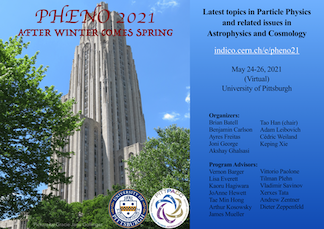Speaker
Description
Measurements at colliders are often done by fitting data to simulations, which depend on many physical and unphysical parameters. One example is the top-quark mass, where parameters in simulation must be profiled when fitting the top-quark mass parameter. In particular, the dependence of top-quark mass fits on simulation parameters contributes to the error in the best measurements of the top-quark mass. In this talk, I discuss a simple new fitting method to reduce this error, where regression is done directly on ensembles of events. This method is superior at reducing the top-quark mass uncertainty when compared to both traditional histogram fitting methods as well as the modern ML DCTR method. More generally, machine learning from ensembles for parameter estimation has broad potential for collider physics measurements.
